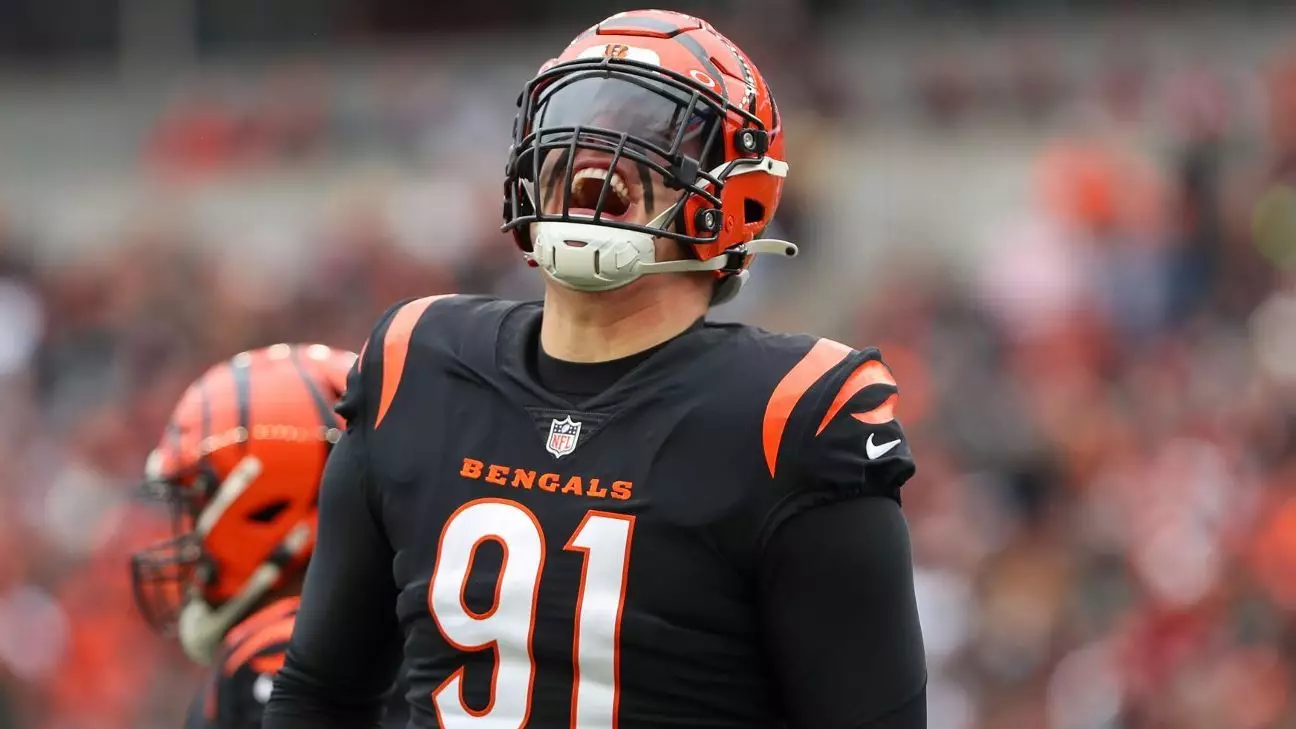The Cincinnati Bengals have become a focal point of contention as star defensive end Trey Hendrickson publicly expressed his dissatisfaction with the team’s handling of contract negotiations. After an impressive season where he led the league with 17.5 sacks, Hendrickson is gearing up for the final year of his current contract but finds himself in a perplexing standoff with the organization. The situation has reached a critical point, as Hendrickson has stated that there has been “no communication” between his camp and the Bengals since the NFL draft earlier this year, a clear indication that something is amiss in the once-promising collaboration between player and team.
Such disputes aren’t uncommon in professional sports, where financial negotiations often lead to rifts, but the depth of Hendrickson’s disappointment highlights a troubling trend. The defensive end emphasized that his expectations were misaligned with the offers presented to him by the organization, revealing insights into a disconnect that could have long-lasting ramifications. With both parties unwilling or unable to articulate their visions effectively, what started as a hopeful partnership now appears to teeter on the precipice of discontent.
The Burden of Expectations
Coming off a season where he not only showcased unparalleled talent but also crucially contributed to the Bengals’ defensive efforts, Hendrickson feels justified in his expectations for fair compensation. His assertion that the offers “did not reflect the vision we shared” suggests that he believed promises were made by the organization that are now evaporating into thin air. This isn’t merely about dollars and cents; it’s about trust and the assurance that a player’s contributions will be recognized adequately. For many athletes, a contract is not just a paycheck, but a reflection of their worth and commitment to the team.
The perception that he should “be happy at certain rates” only exacerbates the situation, suggesting that the organization might not fully grasp the importance of valuing players according to their contributions. Hendrickson’s frustration with Bengals executive Katie Blackburn’s remarks illustrates a broader issue: a lack of understanding on both sides about how to negotiate in good faith. The expectation for players to simply accept deals without genuine dialogue fosters resentment and diminishes morale within the organization.
A Player’s Perspective
For Hendrickson, this isn’t just about a monetary issue; it’s a challenge to his integrity as a player and a teammate. His commitment to the team, evident in his willingness to report for voluntary workouts last season despite his dissatisfaction, underscores a dedication that deserves reciprocation. In professional sports, where so much is at stake, emotional investment can be as vital as strategic gameplay. A team culture of open communication could be the avenue to bridge gaps of misunderstanding before they widen into chasms that can affect overall performance.
With Hendrickson also expressing frustration over the Bengals’ poor communication with his agent, a pattern emerges: a breakdown of trust that could see the talented player reevaluating his future with the team. The urgency he feels is palpable; he’s not seeking to be the highest-paid defensive end, but he rightly desires to be compensated fairly for his contributions. This perspective challenges the often impersonal nature of negotiations, rendering transactions more human and relatable.
The Broader Implications
This saga, while centered on Hendrickson, has larger implications for both the Bengals and how modern franchises negotiate with their key players. As rosters evolve and new talent emerges, organizations must be mindful of existing players’ sentiments. The displeasure accompanying a stalled contract negotiation can create ripples that affect team chemistry, morale, and, ultimately, performance on the field. As the Bengals prepare for their organized team activities, it’s crucial to consider how management can possibly preempt these types of disputes to maintain a cohesive and motivated roster.
Additionally, Hendrickson’s story is indicative of a broader theme in the NFL—it is not just about contracts but about how players feel regarded within the organization. With teams increasingly wanting to cultivate a strong culture and maintain competitive edges, listening to and engaging with players is not optional; it is essential. An unwillingness to collaborate in good faith may lead to the loss of invaluable talent, as evidenced by Hendrickson’s ongoing turmoil. As the situation unfolds, the actions taken by both Hendrickson and the Bengals will be closely scrutinized, shaping the narrative surrounding one of the league’s toughest defensive players.


Leave a Reply